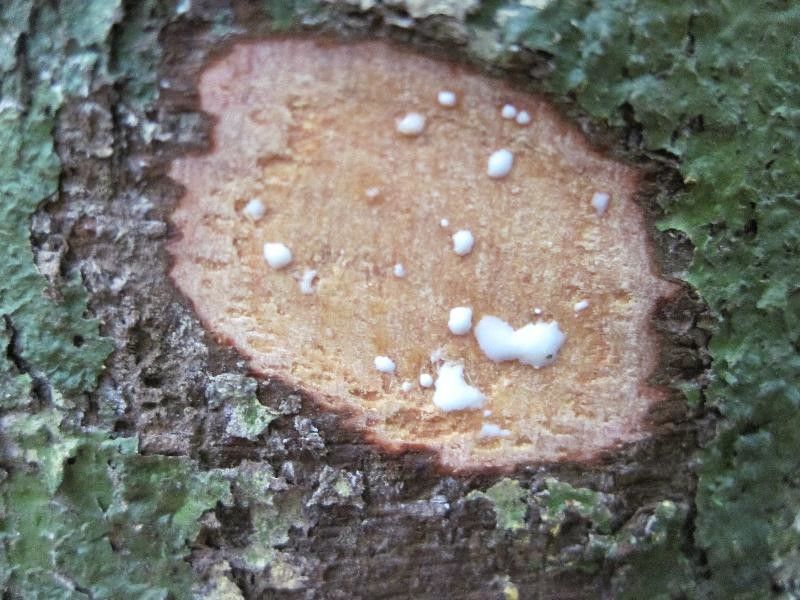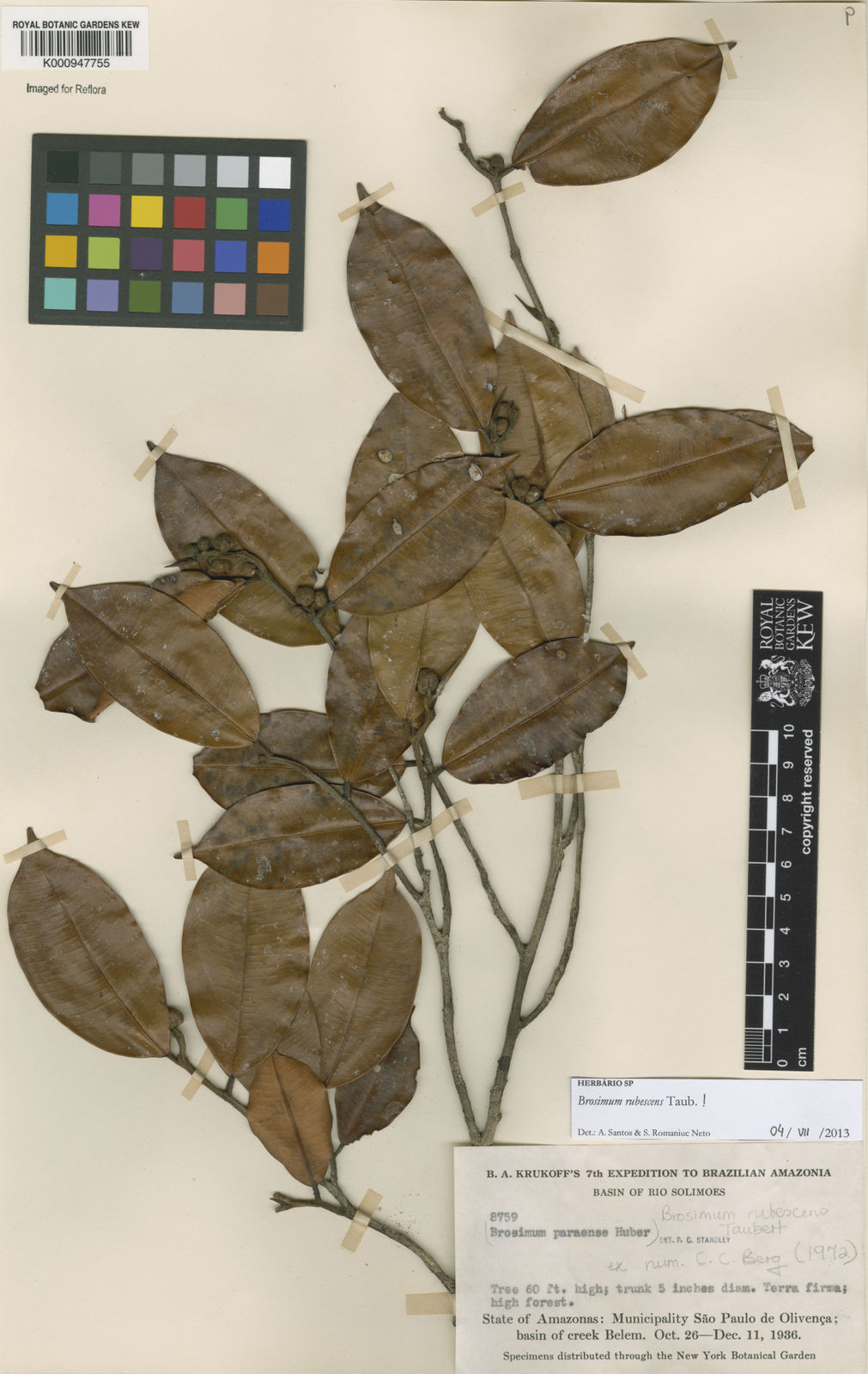Red Milkwood
brosimum rubescens
Also known as: ["Red Milkwood Tree","Red Brosimum"]
Overview
A tropical tree species native to Central and South America, known for its distinctive red sap and large, heart-shaped leaves.
Benefits & Perks
["shade tolerant","wildlife attractant (bees, butterflies, birds)","aesthetic foliage"]
Botanical Classification
| Phylum: | Magnoliophyta |
| Class: | Magnoliopsida |
| Order: | Rosales |
| Family: | Moraceae |
| Genus: | Brosimum |
| Botanical Name: | Brosimum rubescens |
Plant Characteristics
Basic Information
- Category: Trees
- Suitable Location: indoor pot or sheltered outdoor area
- Suitable For:
- Is Weed: No
- Allergenicity: low
Environmental Needs
- Climate: {"temperatureRange":"18–30°C"}
- Hardiness: {"zones":"10–12"}
- Misting: every 2–3 days in dry environments
- Drainage: Fast-draining to prevent waterlogging.
- Soil Type: Well-draining potting mix with added organic matter; cactus or succulent mix can work well.
Maintenance Level
- Maintenance Level: moderate
- Toughness Level: moderate
- Pruning Frequency: Annually or as needed to control size and shape; light pruning can be done year-round.
- Pruning Intensity: Moderate; remove up to one-third of growth if necessary to rejuvenate the plant.
Care Details
Ideal Sunlight Coverage:
Bright indirect light for 6–8 hours daily; tolerates some direct morning sun but avoid harsh afternoon sun.
Sunlight Tolerance Tips:
Acclimate gradually to direct light; protect from intense sun to prevent leaf scorch; adjust placement based on indoor/outdoor conditions.
Care Requirements
Care Difficulty
moderatemoderate
Sunlight
partial shade to full shade
Rotate plant for even growth; use sheer curtains to filter intense light; avoid direct afternoon sun.
Watering
every 7–10 days during growing season, reduce in winter
Water deeply to encourage root growth; allow soil to dry between waterings; avoid overwatering.
Soil
rich, well-draining, slightly acidic soil
pH: Slightly acidic to neutral (pH 6.0–7.0).
Use a mix with good drainage, avoid heavy clay soils, ensure pH is balanced.
Temperature
Prefers 65–85°F (18–29°C); thrives in warm, stable conditions; avoid sudden temperature fluctuations.
Avoid cold drafts, maintain stable temperatures, protect from extreme heat.
Fertilizing
every 4–6 weeks during active growth
Fertilize only when actively growing; flush soil occasionally to prevent salt buildup; use a balanced formula.
Propagation
Methods
Stem cuttings with at least one node; air layering is also effective for larger plants.
Step-by-Step Propagation Guide
- Select a healthy stem, cut below a node, apply rooting hormone, place in medium, maintain humidity, and wait for roots.
Best Time: Spring or early summer when the plant is actively growing.
Environment
High humidity (70–90%), warm temperatures (75–85°F), and indirect light.
Medium
Well-draining mix of peat, perlite, and sand; can also root in water initially.
Hormone
Rooting hormone is recommended to speed up root development.
Timeline
Roots may develop in 4–8 weeks; new growth typically appears after 2–3 months.
Tools Needed
Pruning shears, rooting hormone, propagation tray, humidity dome, well-draining medium.
Quick Tips
Use healthy, non-flowering stems; maintain consistent moisture; provide bottom heat if possible.
Pruning & Repotting
Pruning Guide
Method
Use clean cuts just above a leaf node or branch junction; avoid leaving stubs.
Pruning Plan
Prune to maintain shape, encourage bushier growth, and remove dead or overgrown branches.
Tools
Pruning shears, sterilized knife, gloves.
Checklist
Sterilize tools, prune selectively, remove dead/damaged growth, shape evenly.
Repotting Guide
Best Season
Spring, before the active growing season begins.
Pot Size
Increase pot size by 2–3 inches in diameter; ensure good drainage.
Method
Remove plant gently, trim roots if needed, place in a slightly larger pot with fresh soil, water lightly.
Suggestions
Repot every 2–3 years or when roots fill the pot; necessary to refresh soil and provide space.
Checklist
Check root bound status, prepare new pot, trim roots if necessary, use fresh soil, water lightly.
Advanced Care Tips
Watering Mastery
Watering Checklist
Check soil moisture, water deeply, ensure drainage, adjust for season.
How to Apply Water Properly
Water directly at the root zone until water drains from the bottom; ensure even moisture without waterlogging; water in the morning to reduce evaporation.
Watering Schedule Tips
Water thoroughly when the top 1–2 inches of soil are dry; reduce frequency in winter to prevent root rot.
Soil Improvement
Add perlite or coarse sand for drainage; incorporate compost for fertility; ensure aeration with chunky materials.
Temperature Stress Management
Signs of Temperature Issues
Yellowing leaves, leaf drop, stunted growth, or wilting due to extreme heat or cold.
Cold Stress
Slows growth, causes leaf drop, and may lead to root damage in temperatures below 50°F (10°C).
Solution: Move to a warmer location, insulate pots, avoid drafty areas, and reduce watering in cold conditions.
Hot Stress
Wilting, leaf scorch, or leaf drop due to excessive heat and dry air.
Solution: Provide shade, increase humidity, water more frequently, and ensure good air circulation.
Fertilizing Guide
Fertilizing Checklist
Check growth phase, use diluted fertilizer, avoid winter feeding, flush soil periodically.
Fertilizing Method
Use balanced liquid fertilizer diluted to half strength every 4–6 weeks during growing season (spring/summer); avoid fertilizing in winter.
Common Problems & Solutions
Toxicity Warning
Cats
Slightly ToxicCats may experience mild gastrointestinal upset and skin irritation if they ingest parts of Brosimum rubescens. The sap can cause localized irritation if contacted.
⚠️ Symptoms:
🌿 Toxic Parts:
⚡ Toxic If:
if eaten
Dogs
Slightly ToxicIngestion of Brosimum rubescens by dogs can lead to mild gastrointestinal upset and skin irritation. The sap may cause localized irritation if licked or rubbed against.
⚠️ Symptoms:
🌿 Toxic Parts:
⚡ Toxic If:
if eaten
Humans
Slightly ToxicBrosimum rubescens contains compounds that can cause mild gastrointestinal distress and skin irritation upon contact. The sap is particularly irritating to mucous membranes and can cause dermatitis in sensitive individuals.
⚠️ Symptoms:
🌿 Toxic Parts:
⚡ Toxic If:
if eaten
Frequently Asked Questions
Q: Is Brosimum rubescens suitable for indoor cultivation?
A: No, it is a large tree best suited for outdoor landscapes in tropical or subtropical climates.
Q: Does the Red Milkwood have any medicinal uses?
A: Traditional uses are not well-documented, but its sap has been used locally for minor applications.
Q: How fast does Brosimum rubescens grow?
A: It grows at a moderate pace, typically reaching significant size over several years.
Quick Reference
| Family: | Moraceae |
| Care: | moderate |
| Light: | partial shade to full shade |
| Water: | every 7–10 days during growi |
Get Expert Care Tips
Download the Plantious app for personalized care reminders and plant identification!
Google Play App Store








